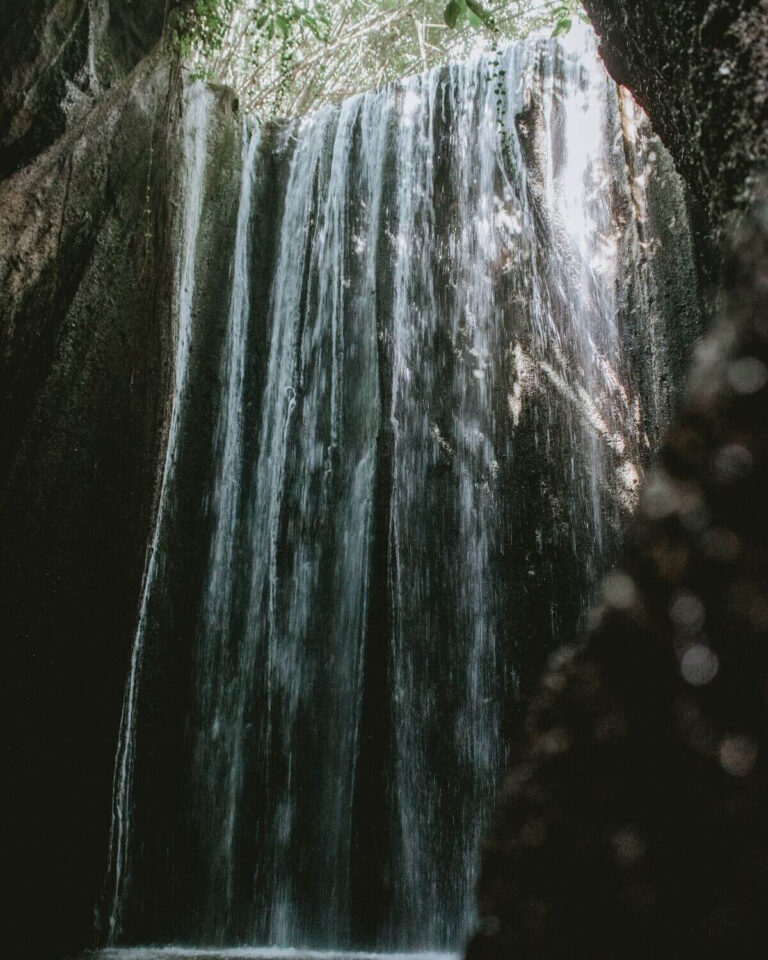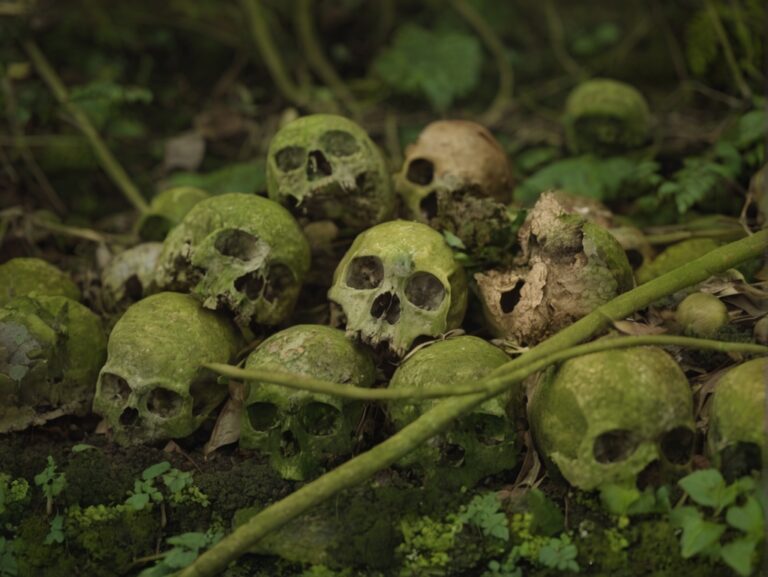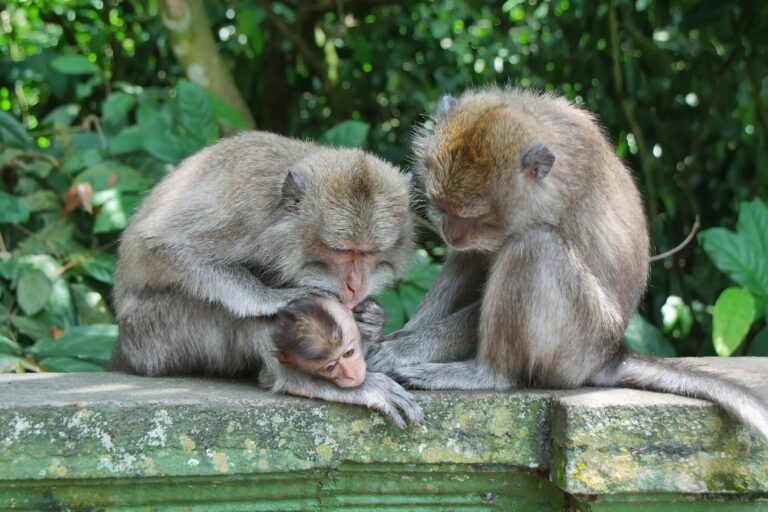Bali has a long and fascinating history. It begins before the arrival of man and runs right up to the present day.
The most interesting part of Bali’s history is, of course, from the arrival of man nearly 1.7 million years ago!
In our short history of Bali, we aim to capture the most fascinating aspects of each age of the island without going into too much detail.
It’s a Cliff Notes version, rather than a heavyweight tome, but it’s more than enough to understand the basics of how Bali Island came to be the way it is today.
In The Beginning – The Geology Of Bali
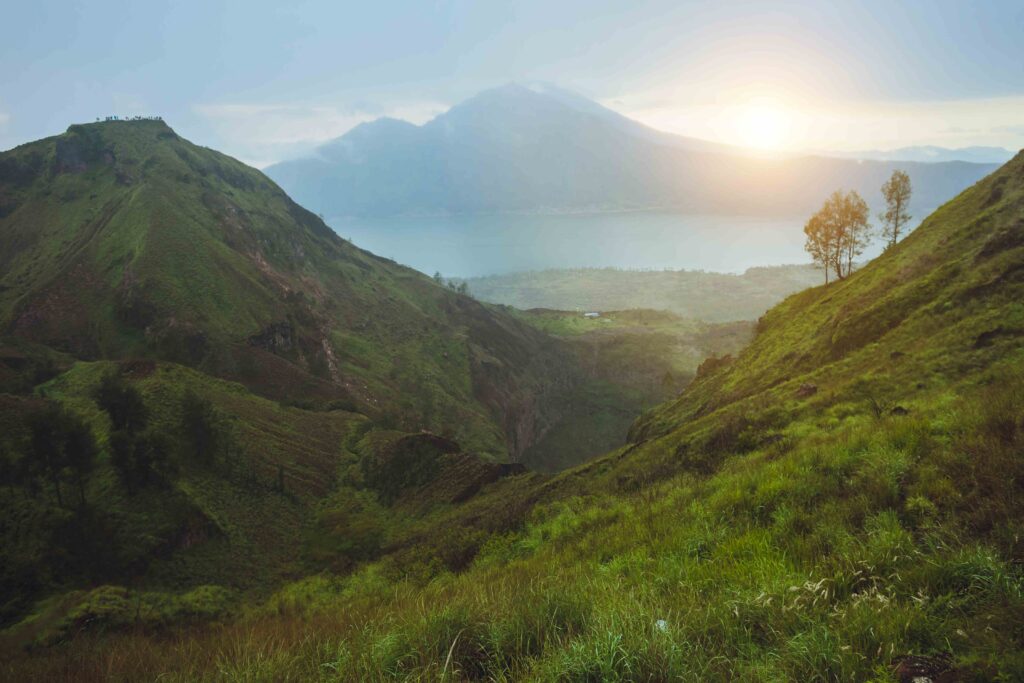
Nearly all of the islands of Indonesia are the result of one continental plate being pulled under another (the Indo-Australian plate is being dragged under the Eurasian one).
This forced parts of the ocean floor above sea level and you can see the limestone that came from beneath the sea clearly today as the cliffs of Uluwatu.
As the process of “subduction” between the plates continued, the crust of the Eurasian plate started to break and this “fissuring” is what caused the volcanoes of Bali and the Lesser Sunda Islands to emerge.
Bali’s largest currently active volcano is Mount Agung which stands over 3,140 meters above sea level (that’s over 10,300 feet)!
The volcanoes have been such a force in Bali that nearly the whole surface of the island has, at some point in history, been covered in lava.
You can find volcanic deposits that are over a million years old in the centre of Bali and the most recent lava fields were caused by the 1963 eruption of Mount Agung.
This might sound like a bad thing, and it is if you’re trapped in an eruption, but the volcanic ash that settles following an eruption creates extremely fertile soil.
One of the reasons that glorious Bali island (Bali Dwipa Jaya in the local tongue) has been so popular with human beings is that it’s always been a wonderful place for foraging and then, later in history, for farming.
In the very earliest part of Bali’s history, it was connected to the island of Java (which is right next to it) and this places Bali to the west of the “Wallace line” (an imaginary line invented by the naturist Alfred Russel Wallace) which denotes the fauna and flora on the island are Asian and not Australasian.
The First Humans In Bali – Colonization From The Indonesian Archipelago
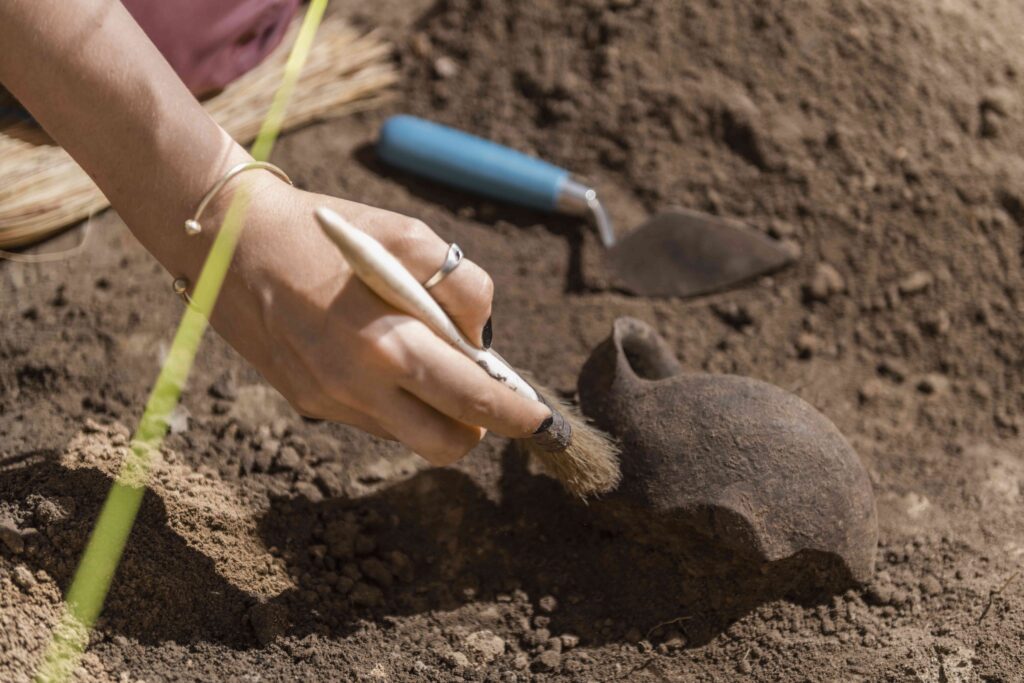
Not that much is known about early man, anywhere in the world, but what we do know is that about 1.7 million to 0.7 million years ago, Java Man (one of the very first species of Homo erectus, the predecessor of modern mankind) was living happily in Java and almost certainly, by extension, in Bali.
After all, at the time Bali would have been connected to Java and even today, they’re only separated by the Bali Strait which is about 2.4 kilometres (or 1.5 miles) wide.
It wouldn’t have required much of a boat to cross this stretch of water and some individuals could certainly have swum over too.
The evidence of Homo erectus living in Bali dates back to the Mesolithic era and tools and and other evidence have been found in caves around the island.
However, the first physical evidence of modern man (Homo sapiens) in Bali comes from the Paleolithic Era (that is the period from 200,000 BC to 1 BC).
There were hand axes and other tools discovered at archeological in the villages of Trunyan and Sembiran.
The Neolithic Culture Of Bali: Austronesian Arrivals
Things began to change dramatically in Bali and the rest of the region in the Neolithic era (3000 BC to 600 BC).
A new wave of humans began to arrive from Austronesia. They spoke Austronesian languages and probably came from the South of China and down through the Philippines and then, the island of Sulawesi.
These people were more sophisticated than their predecessors. Their tools were better made, they constructed villages and could build boats.
They also appear to have preferred to live in the mountains and had some interesting death rituals. They would bury some of their dead (we assume that they would have been the most important members of society) in stone sarcophagi (a coffin) and they had figures sculpted on the outside.
The bodies inside were sometimes placed in a sleeping position but just as commonly they were folded up sometimes three times to help ensure they fit in the space!
A thousand years later, these people would continue their exploration of the world and settle the Polynesian and Melanesian islands.
There are clear aspects of modern Balinese culture that are mirrored in the modern cultures of Polynesia and Melanesia.
That’s an incredible 2,000 years of influence on the region!
The Bronze Age In Bali: The Dawn Of Dong Son
Bali’s Bronze Age would have been from around 600 BC to 800 AD. Sometime in the early part of this period, the “Dong Son” form of bronze working evolved in Northern Vietnam and made its way across the region and arrived in Bali.
There are some early mouldings that survive here in Bali today that were found in Manuaba that would have been used for bronze work.
However, Bali would have been at something of a disadvantage when it came to working with bronze – the raw materials tin and copper are not available on the island and would have been imported from elsewhere.
One of the largest pieces that remain from that period is the “Moon of Pejeng” which is a ceremonial drum that dates back to 300 BC.
Interestingly, the stone sarcophagi of the previous age were still being used in this part of Balinese history and the more recent examples had bronze items discovered inside them.
The Indianization Of Bali: The First Written Balinese Language Records
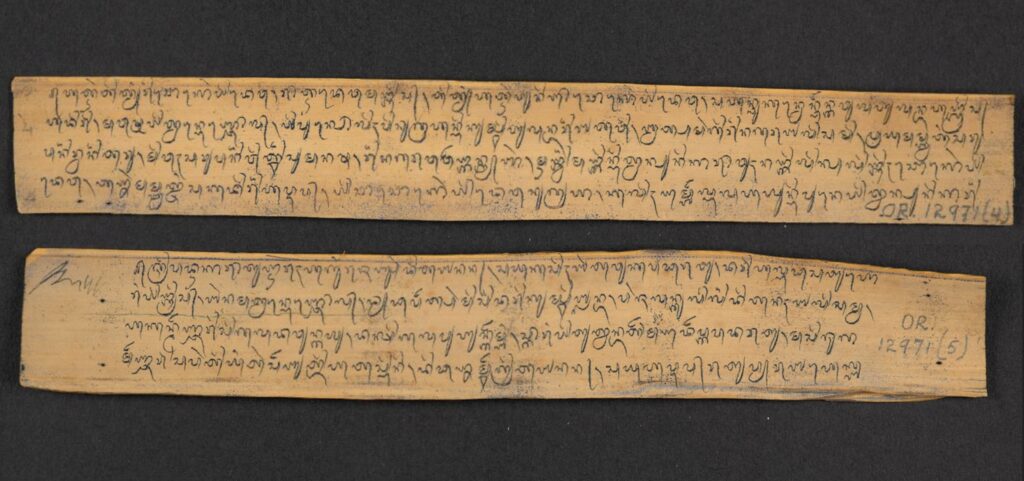
This may be the most important period of Balinese history. After all, the arrival of Indian influences would have been the spark for Balinese Hinduism and the Hindu priests.
It would also have been the time when the Balinese caste system was first adopted. Balinese society is not as strictly divided along caste lines as India’s but the system still underpins modern Balinese life.
Yet, sadly, much of our knowledge of this time period has been lost. What we do know is that the first known written inscriptions in Bali emerged during the 8th century AD.
They were in “stupikas” which are small Buddhist figurines that contained small votive tablets with inscriptions. These were found around the area of the Gianyar Regency.
It is not, precisely clear how long Buddhism arrived before Hinduism or how long it took for Hinduism to become the dominant religion. Nor is anything really known of the original Balinese religion.
The Belanjong Pillar and Goa Gajah temples were both constructed in the 10th century (around 914 AD) and both seem to suggest a combination of the iconography of both religions.
The island would have been divided into many kingdoms at this point, rather than been under a central rule and to further complicate history, there seems to have been a reasonable amount of marriage trading between the Balinese royal families and the Javan ones.
The renowned Balinese prince Udayana Warmadewa married a Javanese princess and their rule over Bali was followed by their son’s rule over East Java.
The son’s descendants returned to rule over parts of Bali in the 12th century!
Of course, Javanese culture would take a very different turn from Balinese culture and things came to a head in 1284 when Java invaded Bali.
The Singharasi King of East Java led this invasion and it was reported in the eulogy to the king known as the Nagarakertagama.
Bali’s main influences may have been from India, but Chinese influences were also present throughout this period.
Money appears to have been introduced to Bali in the 7th century in the form of coins known as “Kepeng”. However, coins didn’t really catch on throughout Indonesia until after the Mongol Empire had been driven out in the 13th century!
Also, the “Barong” which is a traditional mythical figure on the island appears to be derived from the ancient Chinese lion guardian statues of Chinese temples.
It’s possible that the 12th-century king Jayapangus married a Chinese princess too.
The Majapahit Dynasty
Things changed in Bali considerably when in 1343, Gajah Mada, the representative of the King of Java conquered Bali.
The Majapahit Empire founded its capital first at Samprangan and then later moved it to Gelgel (a modern-day village in Bali).
It would remain the seat of power in Bali until the late 17th century.
As you might expect, this marked a period of Javanese expansion into the local culture and it can be found in Balinese architecture, dance, literature (and, in particular, the adoption of the Kawi script of Java), in paintings and sculptures too.
Interestingly, not every person in Bali was amenable to this new regime and some villages appear to have opted out of the Majapahit ways of doing things.
These villages were and are still known as “Bali Aga” and can be found in Bali today, the majority are in the Karangasem Regency but others are found in more remote parts of other areas of the island.
You can arrange tours of the Bali Aga villages with reputable travel agencies (such as the Bali Res Centre mentioned in the FAQs at the end of this piece).
However, as with all empires, the Majapahit were not to last forever and as Islam began to rise in popularity across the archipelago, the empire crumbled and Bali found independence.
This would have been near the end of the 15th century AD or, perhaps, at the beginning of the 16th.
Some of the Javanese aristocracy fled to Bali and brought further Hindu influences with them, including their Hindu priests.
Interestingly, this saw the formation of the ruling class that would govern Bali until the 20th century when the island fell to the Dutch.
It’s also worth noting that the new Islamic Mataram Empire on Hava didn’t entirely get its own way in the following years, and Bali’s King Dalem Baturenggong would rule over East Java, West Sumbawa and Lombok for a period in the late 16th century.
In 1540, Bali saw a Hindu reformation movement which was headed by the priest Dang Hyang Niratha.
This saw the installation of padmasana shrines across the island of Bali which honoured the “Supreme God” Acintya (the equivalent in Indian Hinduism would be Brahma).
It also meant that the wayang theatre (shadow puppet) shows in Bali adapted to reflect this change, creating the first break with Javanese traditions.
Acintya is a fascinating figure because, over the years, Bali’s Hinduism has begun to converge into a monotheistic faith, with Acintya being the only God and the origin of our universe, and all other deities are considered to be expressions of him.
This is probably because in recent years, Bali has been part of the Republic of Indonesia and while the Indonesian constitution allows freedom of belief, it demands that for a religion to qualify for protection it must have a single, omnipotent deity.
Thus, Buddhism, Hinduism and even Confucianism have adapted to suit the political reality.
Thus you may hear Acintya described as Sang Hyang Widhi Wasa (“god Almighty”) which was a term used by early Christian missionaries to describe their God.
First Contact With Europe
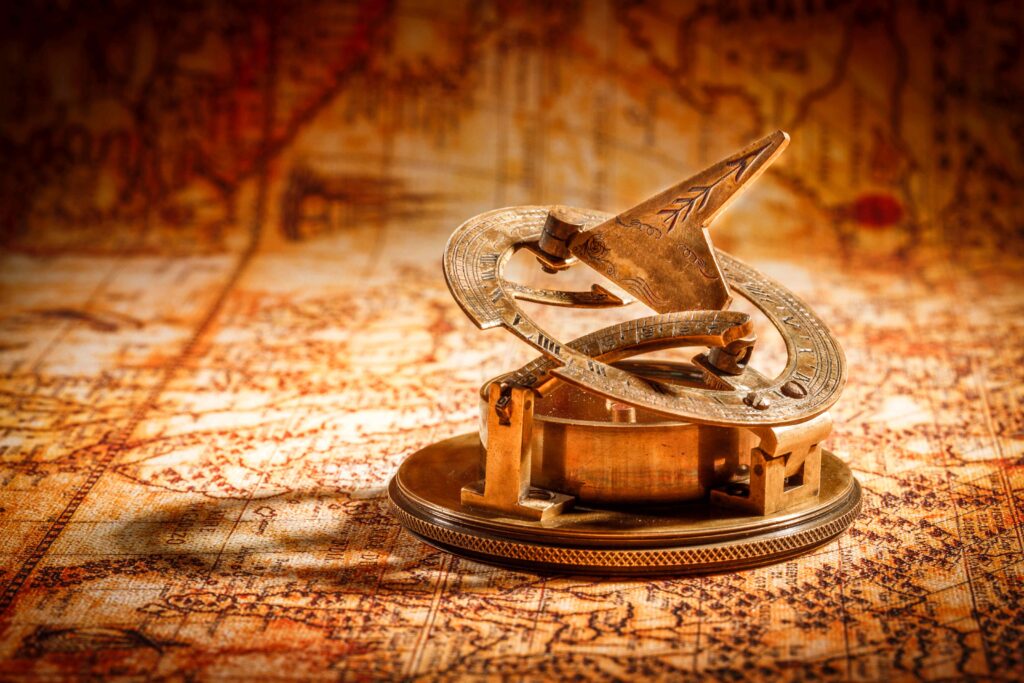
Europeans began exploring Southeast Asia in the 15th and 16th centuries and the first European news of Bali was from Marco Polo.
However, the first contact between a European nation and Bali appears to have taken place in 1512 when a Portuguese expedition arrived in Northern Bali.
In 1585, another Portuguese group came to establish a trading post but their ship sank and only 5 crew survived. They would take up service in the home of the King of Gelgel and were given local wives and homes, in return.
Then in 1597, the Dutch arrived, and Cornelis de Houtman’s expedition was in poor shape (only 89 hands out of 249 had survived the journey from the Netherlands).
Nonetheless, de Houtman was impressed by what he found and he named Bali, “New Holland”.
In 1601, the Dutch King sent a further expedition which was led by Jacob van Heemskerck, de Houtman used this expedition to send a letter to the Dutch King.
The letter invited the Dutch to trade freely with the Balinese and included a copy of a letter in the Balinese language from the Balinese king offering access to the local market.
Sadly, this letter would turn out to be a source of real misery in the years to come as the Dutch would use it to assert their claim to Bali.
The Slave Trade & The Opium Trade
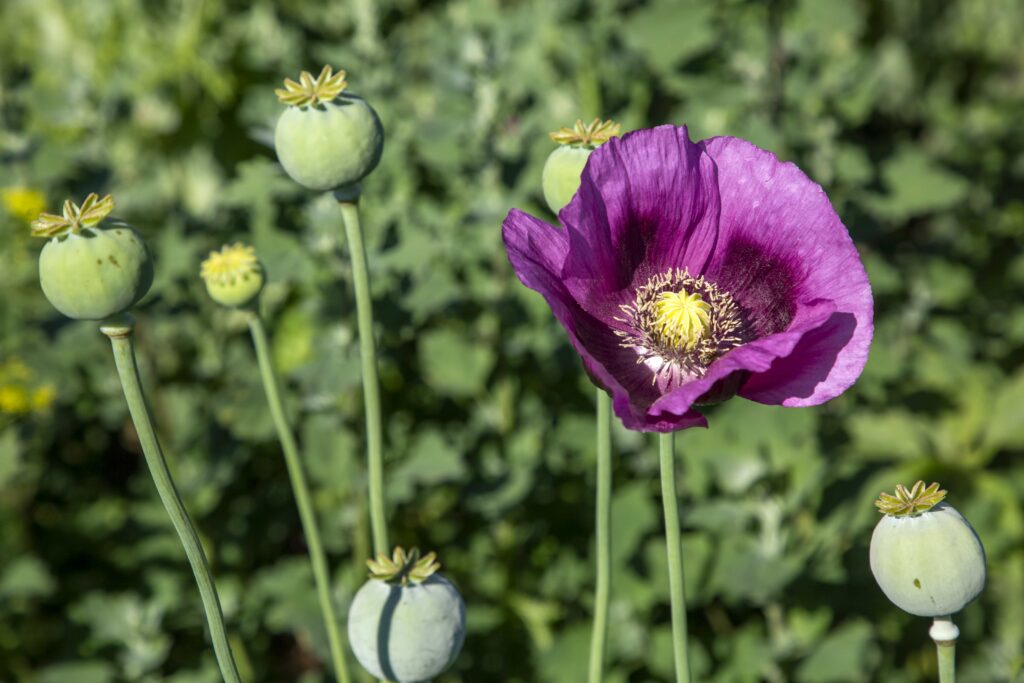
However, for the next couple of centuries or so, the Dutch traded with Bali but didn’t appear to have very much interest in the island as a whole.
It barely merits a mention in their chronicles of the time (unlike Maluku, Java and Sumatra) and it wasn’t until 1620 that a merchant, Hans van Meldert, was sent to Bali to establish a trading post.
He has been instructed to buy “rice, beasts, provisions and women” but it appears that the various Balinese kings of the day, had soured on the Dutch by this point and van Meldert had to flee Bali.
The only thing he took with him, sadly, was a group of 14 slaves, all of them women.
After this formal attempt at trade, the Dutch abandoned their interest in Bali almost entirely and left it to private traders to deal with the Balinese.
The Chinese, Arabs, Bugis and occasionally Dutch private citizens traded with Bali and mainly in two commodities slaves and opium.
Balinese slaves had become highly desirable as the men were thought to be hard-working and courageous and Balinese women were renowned for their beauty and artistic abilities.
Each royal family appeared to embrace the slave trade as a way of getting rid of rivals, criminals, orphans, widows and debtors and in return, they would be paid in opium.
The opium and slave trades were typically conducted through the port of Buleleng.
In the latter years of this trade, the English also began to participate and the Dutch began to worry about what this might mean for their future role in Indonesia.
Conflict Within Indonesia
In the mid-17th century, the Javanese King representing the Islamic state repeatedly tried to invade Bali.
The Dutch saw an opportunity to ally themselves with the Balinese to fight against the Javanese.
However, the uneasy allegiance did not bear fruit and when the Dewa Agung (the ruling council of Bali) requested Dutch assistance in fighting off the Mataram, no help arrived.
The Dewa Agung managed to hold off and then expel the Mataram but the efforts had weakened their power and the island of Bali then split into the 9 minor kingdoms (Klungkung, Karangasem, Mengwi, Gianyar, Tabanan, Jembrana, Bangli, Buleleng and Badung).
The Dewa Agung would retain power over just Klungkung and over the following centuries the kingdoms would wage petty warfare on each other while maintaining lip service to the Dewa Agung.
Franco-Dutch-Balinese Alliance
There came a brief point in the 1800s when the Netherlands fell under the control of France and in this period, Napoleon ordered Java to be reinforced against British attacks and approached the Balinese King of Badung for assistance in this mission.
It didn’t last. Java fell to the British forces in 1811 and the Netherlands escaped French clutches in 1815.
Stamford Raffles Vs Bali
Likewise, the British sought Balinese assistance and the famous general and explorer Stamford Raffles visited Bali in 1815.
He wasn’t entirely welcome as he had been fundamental in abolishing much of the regional slave trade. He had hoped to force the Balinese to submit to him but it was too little too late and the East Indies would soon be back in Dutch hands.
The Dutch Return
Britain signed over the East Indies to the Dutch in 1816 and the new period of colonial rule ushered in a very different approach to the Indonesian archipelago.
Raffles would go on to settle Singapore, an island on which he is still revered today, and the Dutch despatched H A van der Broek to Bali.
Van der Broek’s job was to gain agreement from the kings to some “concept contracts” from the Dutch government.
He was given short shrift but the Dutch chose to pretend otherwise and felt the agreements had become valid even without acceptance from the other party.
Dutch colonial control expanded throughout the region but European traders were instrumental in mitigating their influence in Bali.
Mads Lange, a Danish merchant, was so influential in keeping the peace between the Dutch and Bali he was given the nickname “the White King of Bali”.
The Northern Bali Campaigns
In the mid-19th century, the Dutch mounted large naval campaigns to subdue the archipelago.
This was done in the name of eliminating the slave trade, opium sales and arms sales but was mainly an excuse for exerting their own control.
In 1849, the Dutch seized control of Buleleng and Jembrana. The king of Buleleng was so ashamed that he and his retainers committed mass suicide (an event known as “puputan” in Indonesia and it refers to choosing death over surrender).
The Dutch East Indies

Once the Dutch had their staging post on the island, they quickly moved to appoint a Dutch Controller, Heer van Bloeman Waanders.
Some of his rule was positive and he introduced vaccination, ended the practice of suttee (where a grieving widow casts herself upon her husband’s funeral pyre), prohibited slavery, built roads and coffee plantations and more.
However, he also imposed strict taxes, particularly on the opium trade and tried to force Christianity on the locals.
The attempt to Christianize Bali was an abject failure, however, and by 1858, the locals had had enough. An uprising took place but was brutally put down by the Dutch with the leader being exiled to Java.
Then, another rebellion took place in 1868, this one nearly succeeded, until the Dutch reinforced the island with an extra 700 men and a new commander.
The Dutch continued to all South Bali and its rulers to squabble among themselves and contented themselves to pick off parts of the Balinese empire at opportune moments.
A war among the Balinese kings in 1884 that lasted until 1894, allowed the Dutch to capture the Karangasem Regency and to seize control of Lombok!
The Southern Bali Campaigns

The Dutch stepped up their efforts as the 20th century arrived and the royal house of Badung fell in 1906, and Klungkung fell in 1908, this ended the Majapahit Dynasty and gave full control of the island to the Dutch.
However, the actions of the colonists had not gone unnoticed in the Wet and the press of the day condemned the colonizers as brutally harsh.
The Netherlands had been hiding behind the idea of being a “responsible and benevolent” force in the region, but now it was clear to everyone that this was a lie.
This led to the Dutch establishing an “Ethical Policy” of rule for Indonesia. In Bali, that means the Dutch began to study and protect the local culture and to dial back on their modernization programs.
The first Bali tourism took place in 1914 when the Dutch began to allow visitors from the outside world.
Tourism grew in the 1930s thanks to the intervention of several famous figures from the West including artists, anthropologists and Colin McPhee, a revered musicologist.
Second World War
Sadly, the time of the Dutch East Indies ended in an even more terrible fate for the people of Bali.
During World War 2, Imperial Japan occupied the vast majority of Asia including Bali.
The Japanese were cruel taskmasters and they extracted incredible amounts of wealth from Bali in a very short time.
Japan’s Pacific surrender took place in August 1945 and news of the Japanese surrender saw the locals seize control of all the Japanese weapons and armaments on the island.
Sadly, this didn’t lead to independence but rather to the reinstatement of Dutch Rule.
However, I Gusti Ngurah Rai, a Balinese Colonel, had other ideas and he opted to fight against the colonial presence.
The brave Balinese forces were trapped by an overwhelmingly bigger and better-armed Dutch army at the Battle of Margarana in 1946 and were completely destroyed.
This was not the end of Balinese resistance, however, and Widja Kusuma, continued the fight but he too failed and was forced to surrender in 1948.
Indonesian Independence

This might sound bad for Bali but Dutch rule was coming to a close in this part of the world and the resistance movement in Bali became so strong that by 1949, Bali had more than 50 prison camps for its rebels!
By the end of 1949, the Netherlands recognized the declaration of independence for Indonesia and the new Indonesian government. They ceded control of Bali to the new republic (in exchange for a figure in excess of 100 billion Euro in today’s money).
Anak Agung Bagus Suteja became the first governor of Bali in 1958 when it was established as a province of Indonesia. He was appointed by the first President of modern Indonesia, President Sukarno.
The Modern Post-Indonesian Independence Bali
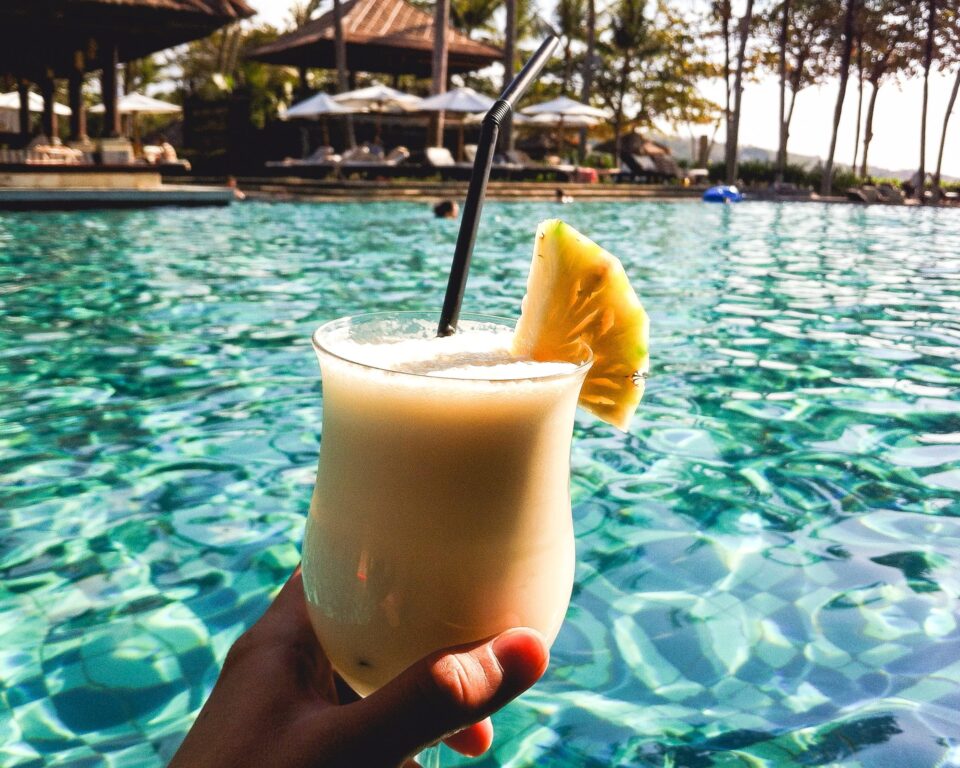
In 1963, the first-ever high-rise hotel was built on the island, the Bali Beach Hotel. It was built in Sanur and was also the first ever 5-star accomodation on the island.
It was extended in 1979 and still stands today, though it is now called the Grand Inna Bali Beach Hotel.
Sadly, Bali does not remember 1963 for this triumphal moment of tourism, but rather it remembers it for the eruption of Mount Agung.
It was one of the worst eruptions in recent history. Thousands of people were killed and many more were displaced.
There was not enough room to accommodate each person in Bali after the eruption and many were forced to move to other islands.
This period then began to see conflict across the archipelago where the old guard supporting the traditional caste system began to lose ground to the rising forces of Communism and Nationalism.
An attempted communist coup in Jakarta failed and it was put down violently by General Suharto and his forces. The army blamed the communists for how things turned out and vowed to root out all communists from the nation.
More than 500,000 Indonesians are thought to have died during this purge, including around 80,000 Balinese (which was an incredible 5% of the island’s population in those days!)
Sukarno was forced out of office by Suharto and Indonesia began to re-establish full diplomatic relations with the West.
After the conflict was over, Bali opted to rebuild itself as a tourist paradise. By 1999, there were more than 30,000 hotel rooms available on the island.
In 2004, more than one million overseas visitors arrived in Bali for the very first time. Unfortunately, this was about twice as many arrivals as they had planned for and over-tourism led to pollution and water shortages for the next decade.
There were also the Bali bombings to contend with in 2002 and 2005, which saw Islamic separatists (from outside of Bali) targetting the island and killing hundreds of people.
This helped to reduce the levels of over-tourism but not in a way that anyone had wanted.
By the end of 2010, tourism was fully restored and Bali saw 2 million visitors.
This suggested a bright future for Bali if it could overcome challenges with infrastructure and while still something of a work in progress, this next year, the island is expected to welcome in excess of 5 million visitors!
The economy of Bali today, is 80% tourist activity and without local, Asian and Western tourism, this small island would be in real trouble.
FAQs
Why Is Bali So Famous?
Bali is famous for its beaches and surfing, its welcoming and hospitable culture and its uniqueness among the islands of the archipelago of Indonesia.
It has also featured in the popular novel Eat Pray Love and the movie adaptation which starred the Oscar-winning actress Julia Roberts.
There’s something for everybody in Bali from the temples of Northwest Bali to Ubud and the mountains of Central Bali, to diving in East Bali, to the beaches of Nusa Dua, Canggu, Kuta, Legian and Seminyak.
Who Made Bali Famous?
In the early part of the 20th century, Margaret Mead, Gregory Bateson, Miguel Covarrubias, Walter Spies and Colin McPhee were probably the people who spread the news of Bali the furthest.
However, in the post-World War II era, it’s fair to say that Australian surfers have probably been the ones to help Bali’s tourist boom the most.
Why Is Bali Called Bali?
The word “Bali” means “sacrifice” and it’s believed the name was given to the island by King Sri Kesarivarma in 914 AD.
Who Are The Original People Of Bali?
The Bali Aga/Baliaga or Bali Mula are considered to be the authentically indigenous peoples of Bali.
Today, they are very much a minority presence and can be found mainly in Karangasem but also in the Northwest and Central regions of the island.
Was Bali Colonized By The Dutch?
Yes and Dutch rule was often very harsh for the Balinese people. The last of the Dutch Governors would leave the island in 1948 when Bali became an official part of Indonesia.
How To Book A Holiday In Bali?
If all this history has got you thirsting to learn more about Bali, we recommend that you book a holiday through the folks at the Bali Res Centre.
They are a local travel service specializing in Balinese travel, they offer very competitive pricing and every penny you spend with them remains in the local economy.
Final Thoughts On Bali History
Bali is an amazing place with a history as long and varied as the history of Indonesia itself.
Balinese culture generally remained intact throughout periods of colonization from various groups and it remains unique and fascinating today.
Of course, the best way to know that is to come and visit. We look forward to welcoming you at FINNS when you arrive!




